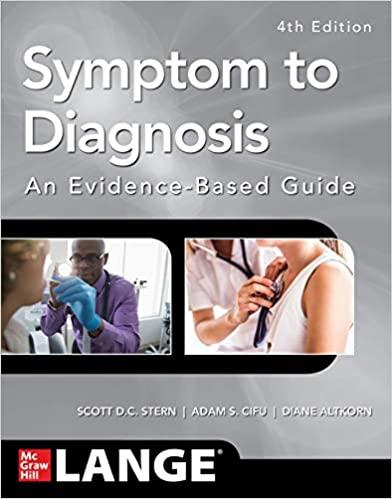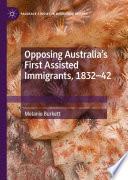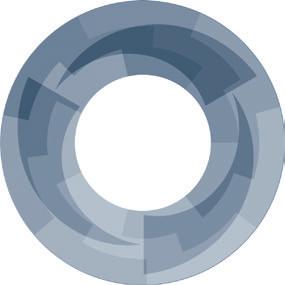About the Authors
Betty Ackley was co-author of Nursing Diagnosis: Guide to Planning Care, which has been a successful text for 20 years, and co-author for four editions of Mosby’s Guide to Nursing Diagnosis She was also a lead co-author/editor of Evidence-Based Nursing Care Guidelines: Medical-Surgical Interventions. This text is designed to help nurses easily find and use evidence to provide excellence in nursing care. The text was published in 2008 and was named AJN book of the year.

Gail B. Ladwig has a long career in teaching and practicing nursing. Gail is co-author of Nursing Diagnosis: Guide to Planning Care, which has been a very successful text for more than 25 years, and she has been co-author for all editions of Mosby’s Guide to Nursing Diagnosis, now in its fifth edition. She is also a co-author/editor of Evidence-Based Nursing Care Guidelines: Medical-Surgical Interventions. This text was published in 2008 and was named AJN book of the year. Gail has been an active member and supporter of NANDA-I for many, many years. Gail is the mother of 4 children and grandmother of 12 and loves to spend time with her grandchildren. She has been married to her husband Jerry for 54 years and is passionate about her family and the profession of nursing.

co-author of Trauma Nursing: from Resuscitation through Rehabilitation and a section editor of American Association of Critical Care Nurses Procedure Manual for Critical Care. She is actively involved in several professional nursing and interprofessional organizations.

Marina Reyna Martinez-Kratz is a professor of nursing at Jackson College, Jackson, Michigan. She is a registered nurse with 30 years of experience and is a Certified Nurse Educator. She received her nursing degrees from Jackson Community College and the University of Michigan. Her expertise in nursing practice has focused on psychiatric nursing, professional issues, and nutrition. In 1998, Marina joined the faculty at Jackson Community College and currently teaches nursing courses in Behavioral Health, Leadership, and Nutrition. In addition, Marina serves on the Nursing Assessment and Professional Development Committees and is a Mandated Reporter Trainer. She has served as a behavioral health consultant for several health care facilities, contributes to and reviews many academic publications, and has presented at the state and national level. Marina belongs to many professional organizations and serves as Board Secretary for the Jackson Council for the Prevention of Child Abuse and Child Neglect and the NLN Ambassador for Jackson College. Marina’s passion is helping students learn to think like nurses! Marina is the proud mother of 3 children and has been married to her partner and best friend Kent for 28 years.
Mary Beth Flynn Makic is a Professor at the University of Colorado, College of Nursing, Aurora, Colorado, where she teaches in the undergraduate, graduate, and doctoral programs. She is the director of the Clinical Nurse Specialist graduate program at the College of Nursing. She has worked predominately in critical care for 30 years. Mary Beth is best known for her publications and presentations, regionally and nationally, as an expert on evidence-based practice in nursing. Her practice expertise and research focus on the care of the trauma, general surgical, and burn-injured patient populations; acute wound healing; pressure ulcer prevention; and hospitalacquired conditions (HACs). She is passionate about nurses’ understanding and translating current best evidence into practice to optimize patient and family outcomes. She is

Melody Zanotti has enjoyed a diverse career in health care and education for over 30 years. She worked as a staff nurse in MICU, SICU and stepdown units for many years. She was instrumental in establishing a nurse triage and resource call center for a major health care system in Ohio. She worked as a school nurse before pursuing a degree in Social Work. Melody received a BA in Social Work and worked as a school social worker for over 10 years. While working as an LSW, she co-developed a truancy prevention program, partnering the school district with local municipalities. Melody currently volunteers her time for many causes. She has done medical missionary work in Africa and is working on a health education program empowering young women in Uganda.
Betty J. Ackley, MSN, EdS, RN† President and Owner
The Betty Ackley LLC Consultant in Nursing Process, Evidence-Based Nursing, and Pilates Jackson, Michigan
Michelle Acorn, DNP, NP PHC/Adult, BA, BScN/ PHCNP, MN/ACNP, GNC(C), CGP Nurse Practitioner University of Toronto Toronto, Canada
Keith Anderson, PhD, MSW Associate Professor School of Social Work University of Montana Missoula, Montana
Amanda Andrews, BSc (Hons), MA Senior Teaching Fellow Pre Qualifying Department Birmingham City University Birmingham, United Kingdom
Kathaleen C. Bloom, PhD, CNM Professor and Associate Director School of Nursing University of North Florida Jacksonville, Florida
Kathleen Patricia Buckheit, MPH, BSN, RN, CEN, COHN-S/CM, CCM, FAAOHN Director of Education American Association of Occupational Health Nurses, Inc. (AAOHN) Chicago, Illinois
Elyse Bueno, MS, ACCNS-AG, CCRN Nurse Manager
Surgical Trauma Intensive Care Unit University of Colorado Hospital Aurora, Colorado
Contributors
†Deceased.
Elizabeth Burkhart, PhD, RN, ANEF Associate Professor
Marcella Niehoff School of Nursing Loyola University Chicago, Illinois
Melodie Cannon, DNP, MSc/FNP, BHScN, RN(EC), NP-PHC, CEN, GNC(C) Nurse Practitioner
Internal Medicine/Emergency Department/GI
Scarborough Rouge Hospital, Centenary Site Toronto, Canada
Adjunct Lecturer
Lawrence S. Bloomberg Faculty of Nursing University of Toronto Toronto, Canada
Stacey M. Carroll, PhD, APRN-BC
Assistant Professor
Nursing
Anna Maria College Paxton, Massachusetts
Krystal Chamberlain, BSN, RN, CCRN
Clinical Nurse Educator
Neurosurgical ICU University of Colorado Hospital Aurora, Colorado
Nadia Charania, PhD, RN Clinical Assistant Professor School of Nursing University of Michigan Ann Arbor, Michigan
Nichol Chesser, RN, CNM, DNP Assistant Professor OB/GYN University of Colorado Aurora, Colorado
Jo Ann Coar, BSN, RN-BC, CWOCN, COS-C
Wound Healing Center
Education Department Chilton Medical Center
Pompton Plains, New Jersey
Maureen F. Cooney, DNP, FNP-BC
Pain Management Nurse Practitioner Westchester Medical Center
Valhalla, New York
Adjunct Associate Professor Pace University College of Health Professions
Lienhard School of Nursing New York, New York
Tara Cuccinelli, RN, MS, AGCNS-BC Clinical Nurse Specialist Emergency Department UCHealth Memorial Colorado Springs, Colorado
Ruth M. Curchoe, RN, BSN, MSN, CIC Independent Consultant Infection Prevention Rochester, New York
Mary Rose Day, DN, MA, PGDip PHN, BSc, Dip Management (RCSI), RPHN, RM, RGN School of Nursing and Midwifery University College Cork, Ireland
Mary Alice DeWys, RN, BS, CIMI
Infant Development and Feeding Specialist (Retired)
Pediatric and Neonatal Nursing
Spectrum Health
Infant Developmental and Feeding Specialist
Hassle Free Feeding Program Division of Harmony Through Touch
Infant Developmental and Feeding Specialist
Pediatric Nursing
Grand Valley State University (Research Team for Premature, Young Infant Developmental Assessment Tool)
Grand Rapids, Michigan
Susan M. Dirkes, RN, MS, CCRN Staff Nurse
Nursing Department University of Michigan Ann Arbor, Florida
Clinical Educator Nursing Department
NxStage Medical, Lawrence Sarasota, Massachusetts
Julianne E. Doubet, BSN, RN, EMT-B Paramedic Instructor (Retired)
Emergency Department
Bethesda North Hospital Mason, Ohio
Lorraine Duggan, MSN, ACNP-BC
Nurse Practitioner
HouseCalls
Optum Health/United Healthcare Group Delaware, Maryland
Dawn Fairlie, PhD, NP
Assistant Professor
School of Health Sciences, Department of Nursing
College of Staten Island, City University of New York Staten Island, New York
Arlene T. Farren, PhD, RN, AOCN, CTN-A, CNE
Associate Professor
Nursing
College of Staten Island Staten Island, New York
Associate Professor
Nursing
City University of New York Graduate Center New York, New York
Judith Ann Floyd, PhD, RN, FNAP, FAAN Professor
College of Nursing
Wayne State University Detroit, Michigan
Katherine Foss, MSN, RN Instructor
Clinical Education Center
University of Colorado, College of Nursing Supervisor, Clinical Entry Programs
Professional Development University of Colorado Hospital Aurora, Colorado
Shari D. Froelich, DNP, MSN, MSBA, ANP-BC, ACHPN, PMHNP-BC
Nurse Practitioner
Alcona Health Center Alpena, Michigan
Tracy P. George, DNP, APRN-BC, CNE
Assistant Professor
Nursing
Francis Marion University Florence, South Carolina
Susanne W. Gibbons, PhD, C-ANP/GNP
Clinical Nurse Practitioner
Adult and Geriatric Centennial Medical Group Elkridge, Maryland
Barbara A. Given, PhD, RN, FAAN
University Distinguished Professor College of Nursing
Michigan State University East Lansing, Michigan
Pauline McKinney Green, PhD, RN, CNE
Professor Emerita Nursing
Howard University College of Nursing and Allied Health Sciences
Washington, District of Columbia
Sherry A. Greenberg, PhD, RN, GNP-BC
Senior Training Specialist
Hartford Institute for Geriatric Nursing and Nurses Improving Care for Healthsystem Elders
New York University Rory Meyers College of Nursing New York, New York
Marloes Harkema, BA
Academie voor Verpleegkunde Hanzehoge School Groningen, Netherlands
Dianne F. Hayward, RN, MSN, WHNP
Adjunct Faculty Nursing
Oakland Community College Waterford, Michigan
Dina M. Hewett, PhD, RN, NEA-BC, CCRN-A
Director and Professor of Nursing
Mary Inez Grindle School of Nursing Brenau University
Gainesville, Georgia
Patricia Hindin, PhD, CNM Associate Professor
Advanced Nursing Practice
Rutgers University School of Nursing Newark, New Jersey
Jacqueline A. Hogan, RD, CSO, LD
Senior Dietitian Clinical Nutrition
University of Texas MD Anderson Houston, Texas
Paula D. Hopper, MSN, RN, CNE Professor of Nursing Emeritus Jackson College Lecturer Eastern Michigan University Jackson, Michigan
Wendie A. Howland, MN, RN-BC, CRRN, CCM, CNLCP, LNCC
Principal
Legal Nurse Consulting and Life Care Planning
Howland Health Consulting
Cape Cod, Massachusetts
Teri Hulett, RN, BSN, CIC, FAPIC
Infection Prevention Consultant and Educator
Infection Prevention Strategies, LLC
Thornton, Colorado
Olga F. Jarrín, PhD, RN
Assistant Professor School of Nursing
Rutgers University
Newark, New Jersey
Assistant Professor
Institute for Health, Health Care Policy, and Aging Research
Rutgers University
New Brunswick, New Jersey
Adjunct Assistant Professor School of Nursing University of Pennsylvania Philadelphia, Pennsylvania
Rebecca Johnson, PhD, RN, FAAN, FNAP
Millsap Professor of Gerontological Nursing and Public Policy
Sinclair School of Nursing Professor
College of Veterinary Medicine University of Missouri Columbia, Missouri
Catherine Kleiner, PhD, MSN, BSN
Director of Research, Innovation, and Professional Practice Children’s Hospital of Colorado Aurora, Colorado
Gail B. Ladwig, MSN, RN
Professor Emeritus
Jackson Community College Jackson, Michigan
Consultant in Guided Imagery, Healing Touch, and Nursing Diagnosis
Hilton Head, South Carolina
Rosemary Koehl Lee, DNP, ARNP, ACNP-BC, CCNS, CCRN
Clinical Nurse Specialist
Critical Care
Homestead Hospital Homestead, Florida
Adjunct Faculty
College of Nursing
Nova Southeastern University Palm Beach Gardens, Florida
Ellen MacKinnon, MS, RN, CNRN, AGCNS-BC
Clinical Nurse Specialist
Pulmonary Department
National Jewish Health Denver, Colorado
Mary Beth Flynn Makic, PhD, RN, CCNS, FAAN, FNAP
Professor
College of Nursing University of Colorado Aurora, Colorado
Tammy Spencer, DNP, RN, CNE, AGCNS-BC, CCNS
Assistant Professor College of Nursing University of Colorado Aurora, Colorado
Bernie St. Aubyn, BSc (Hons), MSc
Senior Lecturer
Pre Qualifying Department Birmingham City University Birmingham, United Kingdom
Elaine E. Steinke, PhD, APRN, CNS-BC, FAHA, FAAN
Professor Emeritus School of Nursing Wichita State University Wichita, Kansas
Denise Sullivan, MSN, ANP-BC
Associate Director of Nursing and Nurse Practitioner
Anesthesiology/Pain Medicine Service
NYC Health + Hospitals/Jacobi Bronx, New York
Cynthia DeLeon Thelen, MSN, BSN, RN
Adjunct Professor School of Human Services Spring Arbor University Spring Arbor, Michigan
State Administrative Manager
Licensing and Regulatory Affairs, Bureau of Community and Health Systems State of Michigan Lansing, Michigan
Rosemary Timmerman, DNP, APRN, CCNS, CCRN-CSC-CMC
Clinical Nurse Specialist Intensive Care Unit
Providence Alaska Medical Center Anchorage, Alaska
Janelle M. Tipton, MSN, RN, AOCN Manager and Oncology Clinical Nurse Specialist Cancer Center
Volunteer Faculty College of Nursing and College of Medicine University of Toledo Toledo, Ohio
Stephanie Turrise, PhD, MSN, BSN Assistant Professor School of Nursing University of North Carolina Wilmington Wilmington, North Carolina
Carolien van der Velde Academie voor Verpleegkunde Hanzehogeschool, Roden Drenthe, Netherlands
Anna van der Woude, BSN Hanzehogeschool, Groningen Groningen, Netherlands
Barbara Baele Vincensi, PhD, RN, FNP Associate Professor Nursing Hope College Holland, Michigan
Kerstin West-Wilson, BS, MS, BSN, RN, IBCLC Neonatal Intensive Care Children’s Hospital at Saint Francis Tulsa, Oklahoma
Barbara J. Wheeler, RN, BN, MN, IBCLC, RN Clinical Nurse Specialist Woman and Child Program St. Boniface Hospital Professional Affiliate Manitoba Centre for Nursing and Health Research Instructor II College of Nursing University of Manitoba Winnipeg, Canada
Suzanne White, MSN, RN, PHCNS, BC Associate Professor Nursing
Morehead State University Morehead, Kentucky
Linda S. Williams, MSN, BSN Professor Emeritus Nursing Jackson College Jackson, Michigan
Ruth A. Wittmann-Price, PhD, RN, CNS, CHSE, CNE, ANEF, FAAN
Dean and Professor of Nursing School of Health Sciences Francis Marion University Florence, South Carolina
Melody Zanotti, BA, RN, LSW Retired Cleveland, Ohio
Milou Zemering, BN Academie voor Verpleegkunde Hanzehogeschool, Groningen Groningen, Netherlands
• Old diagnosis: Risk for latex allergy response
Revised diagnosis: Risk for latex allergic reaction
• Further addition of pediatric and critical care interventions to appropriate care plans
• An associated Evolve Online Course Management System that includes a care plan constructor, critical thinking case studies, Nursing Interventions
Classification (NIC) and Nursing Outcomes
Classification (NOC) labels, PowerPoint slides, review questions for the NCLEX-RN® exam, and appendixes for Nursing Diagnoses Arranged by Maslow’s Hierarchy of Needs, Nursing Diagnoses Arranged by Gordon’s Functional Health Patterns, Motivational Interviewing for Nurses, Wellness-Oriented Diagnostic Categories, and Nursing Care Plans for Hearing Loss and Vision Loss
The following features of Nursing Diagnosis Handbook: A Guide to Planning Care are also available:
• Suggested nursing diagnoses for more than 1450 clinical entities, including signs and symptoms, medical diagnoses, surgeries, maternal-child disorders, mental health disorders, and geriatric disorders
• Labeling of nursing research as EBN (Evidence-Based Nursing) and clinical research as EB (Evidence-Based) to identify the source of evidence-based rationales
• An Evolve Online Courseware System with a Care Plan
Constructor that helps the student or nurse write a nursing care plan
• Rationales for nursing interventions that are (for the most part) based on nursing research
• Nursing references identified for each care plan
• A complete list of NOC Outcomes on the Evolve website
• A complete list of NIC Interventions on the Evolve website
• Nursing care plans that contain many holistic interventions
• Care plans written by leading national nursing experts from throughout the United States, along with international contributors, who together represent all of the major nursing specialties and have extensive
experience with nursing diagnoses, the nursing process, and evidence-based practice. Several contributors are the original submitters/authors of the nursing diagnoses established by NANDA-I.
• A format that facilitates analyzing signs and symptoms by the process already known by nurses, which involves using defining characteristics of nursing diagnoses to make a diagnosis
• Use of NANDA-I terminology and approved diagnoses
• An alphabetical format for Sections II and III, which allows rapid access to information
• Nursing care plans for all nursing diagnoses listed in Section II
• Specific geriatric interventions in appropriate plans of care
• Specific client/family teaching interventions in each plan of care
• Information on culturally competent nursing care included where appropriate
• Inclusion of commonly used abbreviations (e.g., AIDS, MI, HF) and cross-references to complete terms in Section II
We acknowledge the work of NANDA-I, which is used extensively throughout this text. The original NANDA-I work can be found in NANDA-I Nursing Diagnoses: Definitions & Classification 2018-2020, eleventh edition.
We and the consultants and contributors trust that nurses will find this twelfth edition of Nursing Diagnosis Handbook: An Evidence-Based Guide to Planning Care a valuable tool that simplifies the process of identifying appropriate nursing diagnoses for clients and planning for their care, thus allowing nurses more time to provide evidence-based care that speeds each client’s recovery.
Gail B. Ladwig
Mary Beth Flynn Makic
Marina Reyna Martinez-Kratz
Melody Zanotti
NURSING DIAGNOSIS HANDBOOK
An Evidence-Based Guide to Planning Care
STEP 1: ASSESSMENT (ADPIE)
The assessment phase of the nursing process is foundational for appropriate diagnosis, planning, and intervention. Data on all dimensions of the “patient’s story,” including biophysical, psychological, sociocultural, spiritual, and environmental characteristics, are embedded in the assessment, which involves performing a thorough holistic nursing assessment of the client. This is the first step needed to make an appropriate nursing diagnosis, and it is done using the assessment format adopted by the facility or educational institution in which the practice is situated.
The nurse assesses components of the “patient’s story” every time an assessment is performed. Often, nurses focus on the physical component of the story (e.g., temperature, blood pressure, breath sounds). This component is certainly critical, but it is only one piece. Indeed, one of the unique and wonderful aspects of nursing is the holistic theory that is applied to clients and families. Clients are active partners in the healing process. Nurses must increasingly develop the skills and systems to incorporate client preferences into care (Feo et al, 2017). Assessment information is obtained first by completing a thorough health and medical history, and by listening to and observing the client. To elicit as much information as possible, the nurse should use open-ended questions, rather than questions that can be answered with a simple “yes” or “no.” The nurse should assess for the client’s gender identity choice when appropriate. That choice should be respected when caring for the client. Most care plans are written for “traditional “ gender identity; the caregiver will be responsible for adapting the care accordingly.
In screening for depression in older clients, the following open-ended questions are useful (Lusk & Fater, 2013):
• What made you come here today?
• What do you think your problem is?
• What do you think caused your problem?
• Are you worried about anything in par ticular?
• What have you tried to do about the problem so far?
• What would you like me to do about your problem?
• Is there anything else you would like to discuss today?
These types of questions will encourage the client to give more information about his or her situation. Listen carefully for cues and record relevant information that the client shares. Even when the client’s physical condition or developmental age makes it impossible for them to verbally communicate with the health care team, nurses may be able to communicate with the client’s family or significant other to learn more about the client. The information that is obtained verbally from the client is considered subjective information.
Information is also obtained by performing a physical assessment, taking vital signs, and noting diagnostic test results. This information is considered objective information.
The information from all of these sources is used to formulate a nursing diagnosis. All of this information needs to be carefully documented on the forms provided by the agency or school of nursing. When recording information, the Health Insurance Portability and Accountability Act (HIPAA) ( Tovino, 2017) regulations need to be followed carefully. To protect client confidentiality, the client’s name should not be used on the student care plan. When the assessment is complete, proceed to the next step.
STEP 2: NURSING DIAGNOSIS (ADPIE)
In the diagnosis phase of the nursing process, the nurse begins clustering the information within the client story and formulates an evaluative judgment about a client’s health status. Only after a thorough analysis—which includes recognizing cues, sorting through and organizing or clustering the information, and determining client strengths and unmet needs—can an appropriate diagnosis be made. This process of thinking is called clinical reasoning. Clinical reasoning is a cognitive process that uses formal and informal thinking strategies to gather and analyze client information, evaluate the significance of this information, and determine the value of alternative actions (Benner, 2010). Benner (2010) described this cognitive process as “thinking like a nurse.” Watson and Rebair (2014) referred to “noticing” as a precursor to clinical reasoning. By noticing the nurse can preempt possible risks or support subtle changes toward recovery. Noticing can be the activity that stimulates nursing action before words are exchanged, preempting need. The nurse synthesizes the evidence while also knowing the client as part of clinical reasoning that informs client-specific diagnoses (Cappelletti, Engel, & Prentice, 2014).
The nursing diagnoses that are used throughout this book are taken from North American Nursing Diagnosis Association—International (Herdman & Kamitsuru, 2017). The complete nursing diagnosis list is on the inside front cover of this text, and it can also be found on the Evolve website that accompanies this text. The diagnoses used throughout this text are listed in alphabetical order by the diagnostic concept. For example, impaired wheelchair mobility is found under mobility, not under wheelchair or impaired (Herdman & Kamitsuru, 2018).
Figure I.1 Nursing process.
The holistic assessment of the client helps determine the type of diagnosis that follows. For example, if during the assessment a client is noted to have unsteady gait and balance disturbance and states, “I’m concerned I will fall while walking down my stairs,” but has not fallen previously, then the client would be identified as having a “risk” nursing diagnosis.
Once the diagnosis is determined, the next step is to determine related factors and defining characteristics. The process for formulating a nursing diagnosis with related factors and defining characteristics is found in the next section. A client may have many nursing and medical diagnoses, and determining the priority with which each should be addressed requires clinical reasoning and application of knowledge.
Formulating a Nursing Diagnosis With Related Factors and Defining Characteristics
A working nursing diagnosis may have two or three parts. The two-part system consists of the nursing diagnosis and the “related to” (r/t) statement: “Related factors are etiologies, circumstances, facts, or influences that have some type of relationship with the nursing diagnosis (e.g., cause, contributed factor).” (Herdman & Kamitsuru, 2018).
The two-part system is often used when the defining characteristics, or signs and symptoms identified in the assessment, may be obvious to those caring for the client.
The three-part system consists of the nursing diagnosis, the r/t statement, and the defining characteristics, which are “observable cues/inferences that cluster as manifestations of an actual or wellness nursing diagnosis” (Herdman & Kamitsuru, 2018).
Some nurses refer to the three-part diagnostic statement as the PES system:
P (problem)—The nursing diagnosis label: a concise term or phrase that represents a pattern of related cues. The nursing diagnosis is taken from the official NANDA-I list.
E (etiology)—“Related to” (r/t) phrase or etiology: related cause or contributor to the problem.
S (symptoms)—Defining characteristics phrase: symptoms that the nurse identified in the assessment.
Here we use the example of a beginning nursing student who is attempting to understand the nursing process and how to make a nursing diagnosis:
Problem: Use the nursing diagnosis label deficient Knowledge from the NANDA-I list. Remember to check the definition: “Absence or deficiency of cognitive information related to a specific topic” (Herdman & Kamitsuru, 2018).
Etiology: r/t unfamiliarity with information about the nursing process and nursing diagnosis. At this point the beginning nurse would not be familiar with available resources regarding the nursing process.
Symptoms: Defining characteristics, as evidenced by (aeb) verbalization of lack of understanding: “I don’t understand
this, and I really don’t know how to make a nursing diagnosis.”
When using the PES system, look at the S first, and then formulate the three-part statement. (You would have gotten the S, symptoms, which are defining characteristics, from your assessment.)
Therefore, the three-part nursing diagnosis is: deficient Knowledge r/t unfamiliarity with information about the nursing process and nursing diagnosis aeb verbalization of lack of understanding.
Types of Nursing Diagnoses
There are three different types of nursing diagnoses.
Problem-Focused Diagnosis. “A clinical judgment concerning an undesirable human response to a health condition/life process that exists in an individual, family, group or community” (Herdman & Kamitsuru, 2018, p 35).
“Related factors are an integral part of all problem-focused diagnoses. Related factors are etiologies, circumstances, facts or influences that have some type of relationship with the nursing diagnosis (e.g., cause, contributed factor)” (Herdman & Kamitsuru, 2018, p 39).
Example of a Problem-Focused Nursing Diagnosis. Overweight related to excessive intake in relation to metabolic needs, concentrating food intake at the end of the day aeb weight 20% over ideal for height and frame. Note: This is a three-part nursing diagnosis.
Risk Nursing Diagnosis. Risk nursing diagnosis is a “clinical judgment concerning the susceptibility of an individual, family, group, or community for developing an undesirable human response to health conditions/life processes” (Herdman & Kamitsuru, 2018, p 35). “Risk factors are influences that increase the vulnerability of an individual, family, group, or community to an unhealthy event” (Herdman & Kamitsuru, 2018, p 39). Defining characteristics and related factors are observable cues and circumstances or influences that have some type of relationship with the nursing diagnosis that may contribute to a health problem. Identification of related factors allows nursing interventions to be implemented to address the underlying cause of a nursing diagnosis (Herdman & Kamitsuru, 2018, p 39).
Example of a Risk Nursing Diagnosis. Risk for Overweight: Risk factor: concentrating food at the end of the day. Note: This is a two-part nursing diagnosis.
Health Promotion Nursing Diagnosis. A clinical judgment concerning motivation and desire to increase well-being and to actualize health potential. These responses are expressed by a readiness to enhance specific health behaviors, and can be used in any health state. Health promotion responses may exist in an individual, family, group, or community (Herdman & Kamitsuru, 2018, p 35). Health promotion is different from prevention in that health promotion focuses on being as healthy as possible, as opposed to preventing a disease or problem. The difference between health promotion and disease prevention is that the reason for the health behavior should
B. List the Symptoms (Subjective and Objective)
Asks for medication to help her sleep; states she is worrying about too much; “It takes me about an hour to get to sleep”;
“it is very hard to fall asleep”; “I feel like I can’t do anything because I am so tired”; “My job has become very stressful because of a new boss and too much work.”
C. Cluster Similar Symptoms
Asks for medication to help her sleep
“It takes me about an hour to get to sleep.”
“It is very hard to fall asleep.”
“I feel like I can’t do anything because I am so tired.”
“I am worrying too much.”
“My job is stressful.”
“Too much work.”
D. Analyze/Interpret the Symptoms
Subjective Symptoms
• Asks for medication to help her sleep; “It takes me about an hour to get to sleep”; “it is very hard to fall asleep”; “I feel like I can’t do anything because I am so tired.” (All defining characteristics = verbal complaints of difficulty with sleeping.)
• States she is worrying too much (anxiety): “My job is stressful.”
Objective Symptoms
• None
E. Select a Nursing Diagnosis with Related Factors and Defining Characteristics
Look up “sleep” in Section II. Listed under the heading “Sleep pattern, disturbed” in Section II is the following information:
Insomnia (nursing diagnosis) r/t anxiety and stress
This client states she is worrying too much, which may indicate anxiety; she also recently has increased job stress.
Look up Insomnia in Section III. Check the definition: “A disruption in amount and quality of sleep that impairs functioning” (Herdman & Kamitsuru, 2017, p 213). Does this describe the client in the case study? What are the related factors? What are the sy mptoms? Write the diagnostic statement:
Problem—Insomnia
Etiology—r/t anxiety, stress
Symptoms—Difficulty falling asleep, “I am so tired, I can’t do anything.”
The nursing diagnostic statement is written in this format:
Insomnia r/t anxiety and stress aeb difficulty falling asleep.
Note: There are more than 30 case studies available for both student and faculty use on the Evolve website that accompanies this text.
After the diagnostic statement is written, proceed to the next step: planning.
STEP 3: PLANNING (ADPIE)
The planning phase of the nursing process includes the identification of priorities and determination of appropriate client-specific outcomes and interventions. The nurse in collaboration with the client and family (as applicable) and the rest of the health care team must determine the urgency of the identified problems and prioritize client needs. Mutual goal setting, along with s ymptom pattern recognition and triggers, helps prioritize interventions and determine which interventions are going to provide the greatest impact. Symptom pattern recognition and/or triggers is a process of identifying symptoms that clients have related to their illness, understanding which symptom patterns require intervention, and identifying the associated time frame to intervene effectively. For example, a client with heart failure is noted to gain 5 pounds overnight. Coupling this symptom with other symptoms of edema and shortness of breath while walking can be referred to as “symptom pattern recognition”—in this case, that the client is retaining fluid. The nurse, and often the client/family, recognize these symptoms as an immediate cause and that more action/intervention is needed to avoid a potential adverse outcome.
Nursing diagnoses should be prioritized based on urgent needs, diagnoses with high level of congruence with defining characteristics, related factors, or risk factors (Herdman & Kamitsuru, 2018, p 41). Use of ABC (airway, breathing, and circulation) and safety is a method to rank threats to the client’s immediate survival or safety. The highest priority can also be determined by using Maslow’s hierarchy of needs. In this hierarchy, priority is given to immediate problems that may be life-threatening (thus ABC). For example, ineffective Airway clearance, aeb the symptoms of increased secretions and increased use of inhaler related to asthma, creates an immediate cause compared to the nursing diagnosis of Anxiety, a love and belonging or security need, which makes it a lesser priority than ineffective Airway clearance. Refer to Appendix A on Evolve for assistance in prioritizing nursing diagnoses.
The planning phase should be done, whenever possible, with the client/family and the multidisciplinary team to maximize efforts and understanding, and increase compliance with the proposed plan and outcomes. For a successful plan of care, measurable goals and outcomes, including nursing interventions, must be identified.
SMART Outcomes
When writing outcome statements, it can be helpful to use the acronym SMART, which means the outcome must be:
Specific
Measurable
Attainable
Realistic
Timed
The SMART acronym is used in business, education, and health care settings. This method assists the nurse in identifying patient outcomes more effectively.
Once priorities are established, outcomes for the client can be easily identified. Client-specific outcomes are determined based on the mutually set goals. Outcomes refer to the measurable degree of the client’s response. The client’s response/ outcome may be intentional and favorable, such as leaving the hospital 2 days after surgery without any complications. The client’s outcome can be negative and unintentional, such as demonstrating a surgical site infection. Generally, outcomes are described in relation to the client’s response to interventions; for example, the client’s cough becomes more productive after the client begins using the controlled coughing technique.
Based on the “patient’s story,” the nursing assessment, the mutual goals and outcomes identified by the caregiving team and the client/family, and the clinical reasoning that the nurse uses to prioritize his or her work, the nurse then decides what interventions to use. Based on the nurse’s clinical judgment and knowledge, nursing interventions are defined as all treatments that a nurse performs to enhance client outcomes
The selection of appropriate, effective interventions can be individualized to meet the mutual goals established by the client/family. It is then the nurses’ education, experiences, and skills that allow them to select and carry out interventions to meet that mutual goal.
Outcomes
After the appropriate priority setting of the nursing diagnoses and interventions is determined, outcomes are developed or examined and decided on. This text includes standardized Nursing Outcomes Classification (NOC) outcomes written by a large team of University of Iowa College of Nursing faculty and students in conjunction with clinicians from a variety of settings (Moorhead et al, 2018). “Nursing-sensitive outcome (NOC) is an individual, family or community state, behavior or perception that is measured along a continuum in response to nursing interventions. The outcomes are stated as concepts that reflect a client, caregiver, family, or community state, perception of behavior rather than as expected goals” (Moorhead et al, 2018).
It is very important for the nurse to involve the client and/ or family in determining appropriate outcomes. The use of outcomes information creates a continuous feedback loop that is essential to improve nursing quality, ensure patient safety, and secure the best possible client outcomes (Sim et al, 2018). The minimum requirements for rating an outcome are when the outcome is selected (i.e., the baseline measure) and when care is completed (i.e., the discharge summary). This may be sufficient in short-stay, acute-care settings. Depending on how rapidly the client’s condition is expected to change, some settings may evaluate once a day or once a shift. Community agencies may evaluate every visit or every other visit, for example. Because measurement times are not standardized, they can be individualized for the client and the setting (Moorhead et al, 2018).
Development of appropriate outcomes can be done one of two ways: using the NOC list or developing an appropriate outcome statement, both of which are included in Section III. There are suggested outcome statements for each nursing diagnosis in this text that can be used as written or modified as necessary to meet the needs of the client.
The Evolve website includes a list of additional NOC outcomes. The use of NOC outcomes can be helpful to the nurse because they contain a five-point, Likert-type rating scale that can be used to evaluate progress toward achieving the outcome. In this text, the rating scale is listed, along with some of the more common indicators; for example, see the rating scale for the outcome Sleep ( Table I.1).
Because the NOC outcomes are specific, they enhance the nursing process by helping the nurse measure and record the outcomes before and after interventions have been performed. The nurse can choose to have clients rate their own progress using the Likert-type rating scale. This involvement can help increase client motivation to progress toward outcomes.
After client outcomes are selected or written, and discussed with a client, the nurse plans nursing care with the client and establishes a means that will help the client achieve the selected outcomes. The usual means are nursing interventions.
Interventions
Interventions are like road maps directing the best ways to provide nursing care. The more clearly a nurse writes an intervention, the easier it will be to complete the journey and arrive at the destination of desired client outcomes.
Section III includes suggested interventions for each nursing diagnosis. The interventions are identified as independent (autonomous actions that are initiated by the nurse in response to a nursing diagnosis) or collaborative (actions that the nurse performs in collaboration with other health care professionals, and that may require a health care provider’s order and may be in response to both medical and nursing diagnoses). The nurse may choose the interventions appropriate for the client and individualize them accordingly, or determine additional interventions.
This text also contains several suggested Nursing Interventions Classification (NIC) interventions for each nursing diagnosis to help the reader see how NIC is used along with NOC and nursing diagnoses. The NIC interventions are a comprehensive, standardized classification of treatments that nurses perform. The classification includes both physiological and psychosocial interventions, and covers all nursing specialties. A list of NIC interventions is included on the Evolve website. For more information about NIC interventions, refer to the NIC text (Butcher & Bulechek, 2018).
Putting It All Together—Recording the Care Plan
The nurse must document the actual care plan, including prioritized nursing diagnostic statements, outcomes, and interventions. This may be done electronically or in writing. To ensure continuity of care, the plan must be documented

















